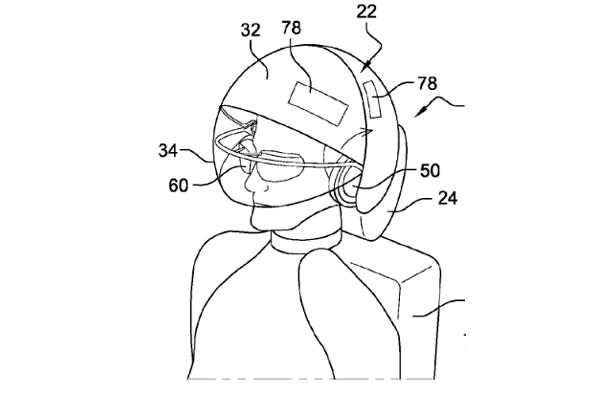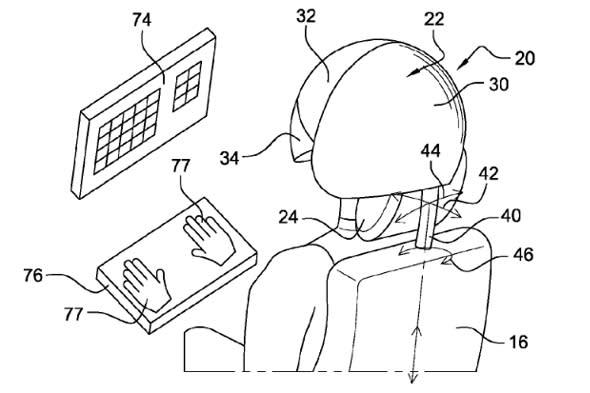Is this high-tech helmet the future of in-flight entertainment?

After recently revealing designs for bicycle-style seats on planes of the future, Airbus is now looking at in-flight entertainment and has submitted a new patent for an astronaut-style helmet, which would allow passengers to fully immerse themselves in onboard entertainment.
The aircraft manufacturer's invention, designed by Frenchman Bernard Guering, would give fearful flyers the chance to be distracted while on a flight and block out all noise for flyers worried about being seated near children.
Designs show that the helmet would be packed with 3D and holographic video support. It would be operated by a remote control or motion capture gloves, and would also be air conditioned to make it more comfortable for travellers to wear for a long period of time.
In the patent application, Airbus says: "During aircraft flights, certain passengers have periods when they are bored either during a wait phase preceding take-off or following landing or during a cruise phase. Moreover, it is known that aircraft flights generate stress for certain passengers.

"To solve this problem, activities are currently proposed onboard the aircraft. Thus, music is broadcast or films shown, access is given to video games or, again, catering services are ensured. However, these various occupations are in some cases insufficient to relieve boredom or stress.
"An aim of the invention is to improve in this respect the comfort of aircraft passengers.
"Thus, the helmet in which the passenger houses his/her head offers him/her sensorial isolation with regard to the external environment. This isolation can be more or less pronounced according to the configuration of the helmet and the functionalities which are associated with it. This isolation allows the passenger to better profit from some of the distractions offered, for example: listening to music, watching films, etc. If the passenger is sensitive to stress, this isolation, possibly associated with one of the above-mentioned activities, allows him/her to more easily calm down and relax. In all cases, the invention improves therefore the comfort of the passengers and the pleasantness of their flight.
"According to the embodiments, the isolation can be a sound, visual and/or olfactory isolation. It can be total or partial for any of these aspects, or several of them or all."
Related articles
Airbus calls for wider seats for better passenger sleep
Robots and driverless trains are the future for rail travel





